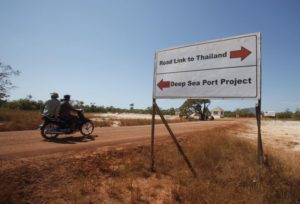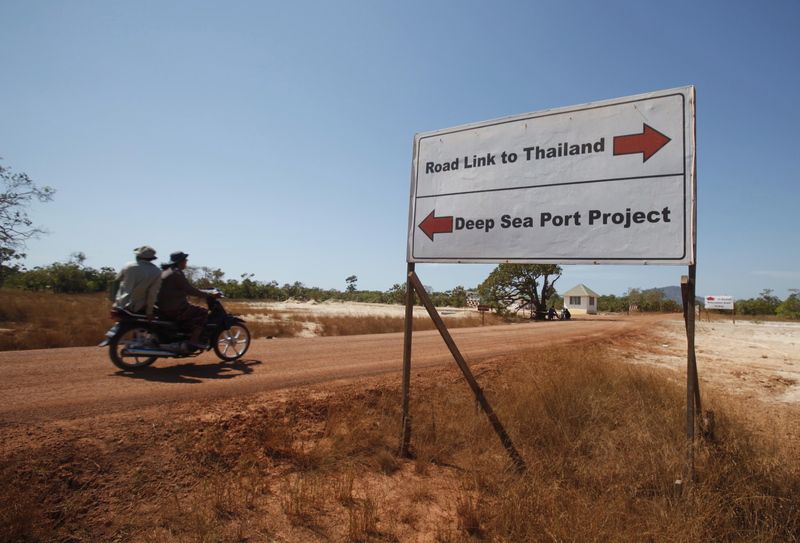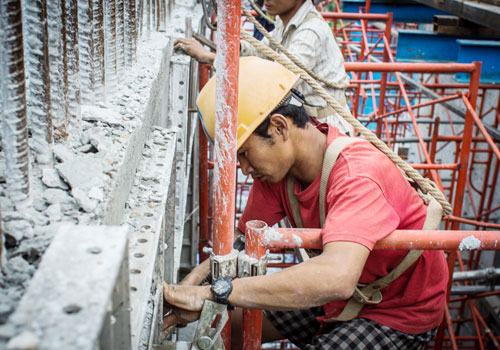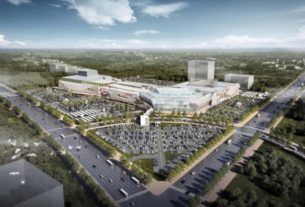
Thailand and Myanmar Agree to Push Ahead With Myanmar’s Dawei Special Economic Zone
04 October 2019
Myanmar and Thailand have published their nine-point agreement to push through the implementation of the long-delayed US$8-billion (12.23-trillion-kyat) Dawei Special Economic Zone (SEZ) in southern Myanmar’s Tanintharyi Region, which is set to be Southeast Asia’s largest industrial complex.
After a bilateral ministerial meeting in Naypyitaw, a statement was issued to reaffirm the construction at the Dawei SEZ of the initial and final phases of the project at the same time. It was also agreed to hold further meetings between one of Myanmar’s vice presidents and a Thai deputy prime minister.
The agreement included plans for a two-lane highway to the Htee Kee border through Myittar to enable the site’s construction.
Both sides decided to invite third-party investment for the final implementation of the SEZ and to supply the electricity. The next meeting is due to be held in Thailand.
Myanmar’s deputy minister for electricity and energy, Dr. Tun Naing, said the meeting had made progress and the ground construction work was now expected to begin in 2020.
Italian-Thai Development PCL (ITD) was initially granted a 75-year concession to develop and attract investment in 2008 with completion due in 2015.
Financial constraints saw ITD withdraw in 2013 but two years later both countries agreed to allow ITD and other companies to develop a site of up to 27 square kilometers.
The initial phase, including an industrial estate, power plants, a small port and an LNG terminal, was granted to a consortium led by ITD in March 2016, just before the National League for Democracy government came into office.
Meanwhile, the Dawei SEZ management committee and the ITD consortium are finalizing the conditions for the initial phase of construction.
The budget for the initial phase is more than US$1 billion, according to the management committee.
A key component of the whole project is a 196-square-kilometer deep seaport expected to be a potential boon for firms currently using the crowded Malacca Strait.
The project is due to include zones for high-tech, information technology, export-processing and service businesses.
In 2015, Japan joined the Dawei SEZ Development Company Limited, saying the project lay on its southern economic corridor as part of Tokyo’s development strategy for the Greater Mekong region.
Other shareholders are Thailand’s Neighboring Countries Economic Development Cooperation Agency (NEDA), Myanmar’s Foreign Economic Relations Department and the Japan Bank for International Cooperation.
The Japan International Cooperation Agency (JICA) in July submitted a fact-finding study based on NEDA’s existing master plan to ensure it is in line with changing political, economic and social conditions.
The management committee said Myanmar’s development would be based on NEDA’s master plan and JICA’s study.
The Union Parliament in March 2018 approved a 4.5-billion baht (US$137-million or 220.5-billion-kyat) low-interest loan from NEDA for the two-lane highway to Thailand.
In November, the Construction Ministry agreed for NEDA to conduct a survey and design work to upgrade the highway.
Dr. Tun Naing said the delays were due to infrastructural weaknesses, particularly with the roads and electricity supply.
The Energy Ministry said in 2018 that only 16 percent of Tanintharyi residents had access to the national grid.
He said the government would provide electricity to the SEZ when the highway was completed.
In its July report “Nature in Peril: The risk to forests and wildlife from the Dawei-Htee Khee Road”, the World Wildlife Fund said the road would endanger flora and fauna through the vast forests of the Dawna Tenasserim region, which spans the border hills.
The report said the forest was one the most intact landscapes in the Greater Mekong region containing tigers, elephants and other endangered wildlife.
It is also home to an estimated 168 mammal species, 568 bird species and thousands of reptile, amphibian, insect, fish and plant species.
The Ministry of Natural Resources and Environmental Conservation approved the project’s environmental and social impact assessment in May last year, but WWF said the assessment failed to address the loss of habitat connectivity for threatened species, an increase in deforestation and illegal hunting.
There has been resistance from residents since the project was first announced. In 2014 the Dawei Development Association reported that the SEZ had affected livelihoods in 20 to 36 villages with a combined population of 22,000 to 43,000.
Source: https://www.irrawaddy.com/news/burma/thailand-myanmar-agree-push-ahead-dawei-special-economic-zone.html


